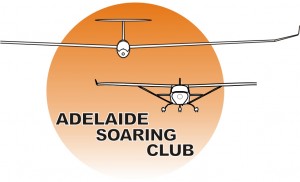Gliding FAQs
How long does it take to learn how to fly a Glider?
Different people learn at different rates depending on their ability and on how frequently they take lessons. But, as a guide, 40 to 50 instructional flights should see you flying safely by yourself.
Who will teach me and do I get a License?
A number of different instructors will teach you. Each one is experienced, qualified and is registered with the Gliding Federation of Australia (GFA), gliding’s controlling body. All instructors are volunteers, which helps us contain costs – which is to your benefit. We don’t have licences as such, but you will progress through a series of certificates and badges as you learn and become more proficient. The Licence equivillent is called the Glider Pilot Certificate (GPC) which you can get at the end of your training.
How much does it cost?
Care is taken to ensure that charges and fees are accurate and up to date, however they are subject to change without notice.
Whilst the attached documents may not reflect the latest or current costs they will provide a good guide.
When can I learn?
Weather permitting, the Club operates every day of the year except Christmas day and Tuesdays. Because of work commitments, most people choose to undertake their training on weekends and Public Holidays, but the choice is yours. A qualified instructor is on duty every day we operate.
Is Gliding Safe?
Gliding can be considered a safe sport and the Adelaide Soaring Club has been operating since 1944 so we are vastly experienced in pilot training and we have an excellent safety record to prove it. We provide training in Gliding and Light Sports Aircraft from some of the best instructors and coaches in the world and we can do it with a safety record that is second to none.
Our instructors are trained to the high standards required by the Gliding Federation of Australia and we have clearly documented rules and procedures that are vigorously enforced. Gliders are checked each day by a qualified inspector and the pilot performs a number of standard checks before he will fly it, Once in flight there are additional checks the pilot will perform such as post launch and pre-landing checks to name a few. New members, including those who come along for a trial flight, will get a thorough safety briefing with regards to the do’s and don’ts on the airfield and in the aircraft.
Safety is and will remain our first priority.
What happens after I reach solo standard?
The choice is yours. You will be given some Post-Solo training to hone your skills further and learn some more advanced gliding techniques. After that, you may take friends and family flying with you. However, gliding is not only a matter of flying quietly around over Gawler and nearby areas, although this is a relaxing and enjoyable way to pass the time in the air. Many members are also enthusiastic aerobatic and cross-country pilots. It’s often said that gliding is like sailing: You don’t have a noisy engine and you don’t simply drive from A to B Gliding and Sailing are both sports in which you only get where you want to go by your skill in understanding and using the elements. The sense of achievement is what makes gliding so satisfying. Can you imagine flying a motorless aircraft long distances across the countryside? Well, many of our pilots fly north and east of Gawler quite regularly. Flights of 300 to 500 kilometres are common and a number of pilots have flown in excess of 1,000 km’s.
How many Gliding clubs are there? Can I fly at other Gliding Clubs?
While the Adelaide Soaring Club with its 250+ members is one of the largest in Australia, it is only one of 47 clubs in the country. There are 11 clubs throughout South Australia. Their names and addresses can be obtained from the Club’s Office or from the GFA web site https://www.glidingaustralia.org. Adelaide Soaring Club members are made welcome at any club anywhere in the world.
What kind of people fly Gliders?
All kinds – gliding is not an elite sport for only the wealthy. Nor is it a sport for any specific age group, our pilot’s range in age from 15 to over 80! Club membership includes electricians, students, mechanics, doctors, teachers, managers, airline pilots, fitters and turners, retired people, nurses, vets, farmers, taxi drivers, police officers, accountants and so on. Their common bond is a shared love of flying.
Does the club have a social life?
Yes indeed. We hold regular dinners and barbecues. We also have a Licensed Bar and a Club House with bunk-beds and self-catering facilities for those who like to stay overnight.
A very popular event in the Club’s social calendar is the annual trip to the Flinders Ranges at Easter . Members and their families take half a dozen gliders and a tow plane and spend an exhilarating week flying over the Pound and nearby ranges.
The scenery is simply stunning. We stay in cabins, tents and caravans and, with evenings spent by camp fires, it really is a wonderfully different break for all. Like everything in life, you only get out of the Club what you are prepared to put into it, but for those who join in the fun, the rewards are great.
If I decide to learn how to fly what do I do next?
Simply ring the club on 08 8522 1877 and everything can be arranged from there. We look forward to seeing you soon!
